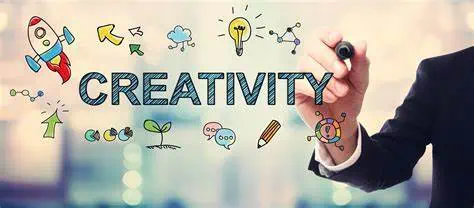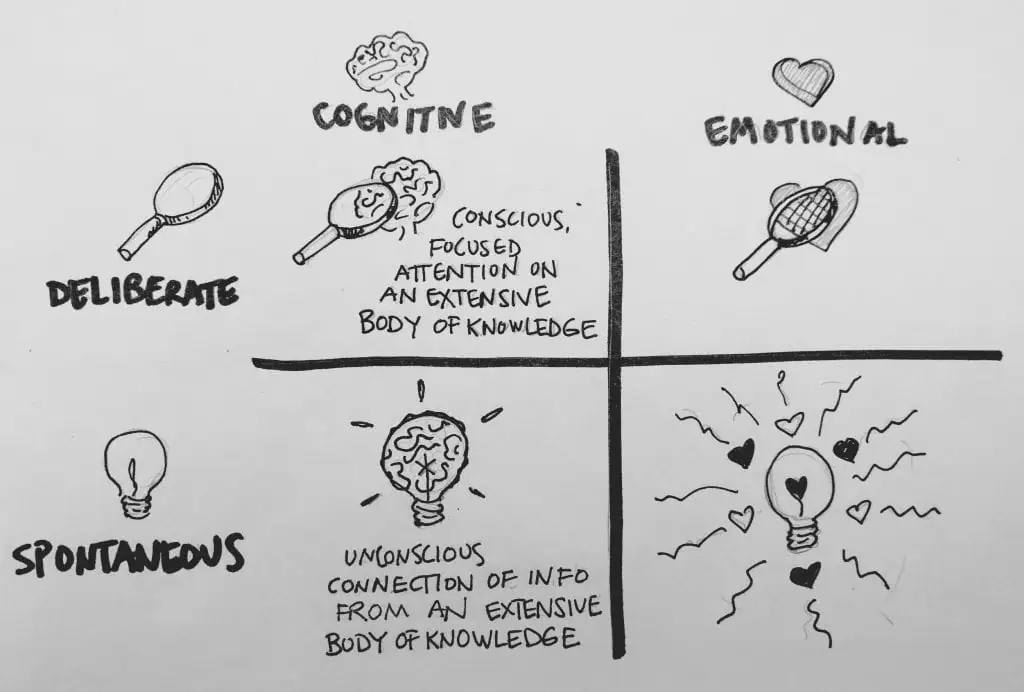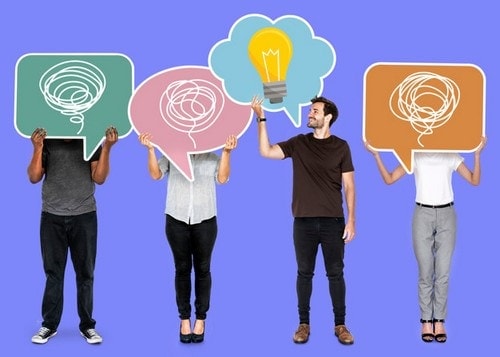Understanding creativity is crucial in all aspects of life, from personal to professional. Are you interested in learning about the different types of creativity and how they can benefit your personal and professional life?
Creativity is the capacity to generate or identify ideas. Here are the four major types of creativity –
- Deliberate cognitive creativity
- Deliberate emotional creativity
- Spontaneous cognitive creativity
- and Spontaneous emotional creativity
Whether you seek a creative career or want to improve your personal life, understanding the various types of creativity can help you unlock your potential. Keep reading to learn more about the different types of creativity and how they can be applied in various contexts.
Types of Creativity: What is Creativity?
Creativity is the capacity to generate or identify ideas, alternatives, or possibilities that can be used to address problems, engage with people, or provide enjoyment for oneself and others. It’s essential to learn the types of creativity.
4 Major Types Of Creativity
To perform your job correctly, you should be innovative. This demonstrates that naturally talented people do not grasp creative potential in artistic activities.
To demonstrate the difference, you might use your creativity in your line of work. You won’t stand out from the crowd if you do the task as everyone else does.
The world is transitioning toward a world dominated by people who create change. Only those who are prepared will appreciate it. Before fully realizing your potential and understanding the types of creativity, you must determine the creative expression that supports your well-being.
In recent years, businesses have sought creative individuals to fill open positions. Understanding the meaning of “creativity,” its various varieties, and the psychology behind it is vital.
Deliberate, Cognitive Creativity
Despite significant advancements in understanding the neurological origins of creativity, many unanswered concerns still exist.
One such issue relates to the interaction of two hidden cognitive modes, conscious goal-directed cognition and impulsive concept creation, during creative thinking.
Although the literature on creativity frequently suggests that deliberate and impulsive thinking interacts (e.g., dual-process models), there is still a need for a bottom-up, data-driven evaluation of the cognitive processes connected to creative thought.
We are consciously aware of deliberate and cognitive creativity, a mental activity that heavily draws from the body of existing information. Your brain’s Prefrontal Cortex (PFC) is critical to purposeful and cognitive creativity. It enables you to concentrate on a task while connecting facts in other areas of your previous knowledge.
The PFC enables you to intentionally consider something before compiling data to create a unique thought.
Deliberate and Emotional
According to Dietrich, creative individuals who may be categorized as purposeful and emotional allow their feelings to impact their work. These people tend to be more emotional and sensitive and may enjoy spending a lot of quiet time alone for self-reflection or writing in a journal.
Despite this, they are also highly logical and rational, and they can combine deliberate actions with emotional creativity. The amygdala, which is in charge of human emotion, and the cingulate cortex, which mixes learning and information processing, are the brain’s parts responsible for this type of creativity.
Spontaneous and Cognitive
If you’re making a website or web app in which users are expected to come up with original solutions to problems, you’ll need to lay the groundwork in one phase and then have them return a few days later with their answers. To achieve this, you’ll need to construct the issue in steps.
Sometimes you put in significant effort to solve a problem, but you will be unable to do it. For example, when you need to organize your time for the next month to get something done but can’t seem to develop a plan, you can get a brilliant idea while relaxing in front of the TV.
This exemplifies the usefulness of spontaneity. This also occurred with Isaac Newton, one of the most outstanding scientists of humanity. An apple that fell on his head while lounging under a tree provided the inspiration that finds evidence of the laws of gravity.
This is the “Eureka!” moment for Newton and is a beautiful illustration of a spontaneous and intelligent person. This form of creativity arises when an individual possesses the skills to complete a specific task but lacks the inspiration and guidance necessary to go in the right direction.
Spontaneous and Emotional
The amygdala is responsible for both spontaneous and emotional forms of creativity. The amygdala is part of the brain responsible for processing fundamental feelings. When both the conscious brain and the prefrontal cortex (PFC) are relaxed, the conditions are ideal for the emergence of impromptu concepts and works of art.
When you think of great musicians and artists, the type of creativity that comes to mind is similar to what you just read about. A eureka moment or a religious experience are two examples of powerful moments of spontaneous and emotional creativity.
These kinds of moments can also be quite creative. It is not necessary to have specialized information (not cognitive) for this sort of creativity; nonetheless, it is often necessary to have the skill (such as literary, artistic, or musical ability) to develop something from the idea of creativity that is spontaneous and emotional.
See Also: 8 Types Of Problem-Solving Techniques For Businesses
FAQs
What is the importance of creativity?
We can see challenges more openly and innovatively and find solutions to them because of our capacity for creativity. The creative process frees the mind. A civilization that has parted ways with its creative side is a trapped society because successive generations of individuals may resist new ideas and perspectives. It enables us to overcome assumptions and broadens the scope of our ideas.
Is creativity a skill?
Creativity can be developed in two ways: as a skill that can be learned and as a process that can be guided. A solid foundation of information, learning a discipline, and mastering a way of thinking is the requirements for artistic efforts. Experimenting, exploring, challenging preconceived notions, using our imagination, and synthesizing information are all effective ways to cultivate creative thinking.
What are the barriers to creativity?
Inadequate levels of autonomy. The concept of autonomy can divide people. Uncertainty Regarding direction, one of the most frustrating obstacles to creativity is not having a clear direction. Other barriers to creativity include fear, inadequate resources, and functional fixedness.
What is creative thinking?
The capacity to think about something fresh is what we mean when discussing creative thinking. Analytical thinking, an open mind, problem-solving ability, organization, and effective communication are all essential components of creative thinking.
Conclusion
So, that explains types of creativity; regardless of its form, creativity requires an engaged use of imagination and the generation of unique ideas to produce something novel. Thankfully, being creative is a part of the natural order of existence and an essential component of being human.
A solid foundation of information, learning a discipline, and mastering a way of thinking are requirements for artistic efforts.
Experimenting, exploring, challenging preconceived notions, using our imagination, and synthesizing information are all effective ways to cultivate creative thinking.






